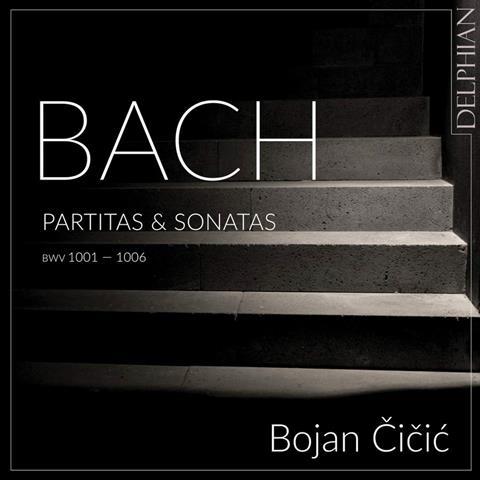Thoughtful readings that shed fresh light on Bach the architect

The Strad Issue: November 2023
Description: Thoughtful readings that shed fresh light on Bach the architect
Musicians: Bojan Čičić (violin)
Works: Bach: Sonatas and Partitas BWV1001-1006
Catalogue number: DELPHIAN DCD34300 (2 CDs)
Bojan Čičić exhibits a profound understanding of the architecture of these works, particularly of BWV1004’s Chaconne and the sonatas’ fugues, and he performs them neatly, accurately and with a remarkably relaxed bowing style, keeping substantially faithful to Bach’s articulations. His extempore ornamentation, added largely in repeated passages or sections, is tasteful and unfailingly convincing. The recording is spacious and clear, but its reverberant ambience may be responsible for an overall scarcity of light and shade.
The first disc focuses on the three partitas. Čičić makes good musical sense of BWV1006’s Preludio and is alert to the idiomatic nuances of each dance. He exploits the hierarchy of the bar to excellent effect, especially in BWV1004’s Allemanda. He brings a refined sensitivity to BWV1004’s Sarabanda, but the equivalent movement of BWV1002 and its Double seem somewhat laboured; not so, though, the Tempo di Bourrée of BWV1002 and Giga of BWV1004 or the buoyant Gavotte, unusually swift Menuet pairing and lively Bourrée of BWV1006.
Read: Becoming an early music specialist is not a cop-out. Here’s why…
Read: Academy of Ancient Music appoints new leader
Read: Young musicians should be given access to historic instruments
In the sonatas, Čičić is especially adept at delineating the voice-leading of the fugal second movements and realises their densely polyphonic passages with calm control. He is freely expansive in the opening movements of BWV1001 and 1003, but occasionally loses track of the pulse, and the insistent rhythms of BWV1005’s Adagio tend towards doggedness, despite some imaginative embellishment. He gives the slow third movements a relaxed sense of line and bows the final Presto of BWV1001 unusually lightly, compared with his more energetic approach in the equivalent movements of BWV1003 and 1005.
Robin Stowell
Reference













































No comments yet